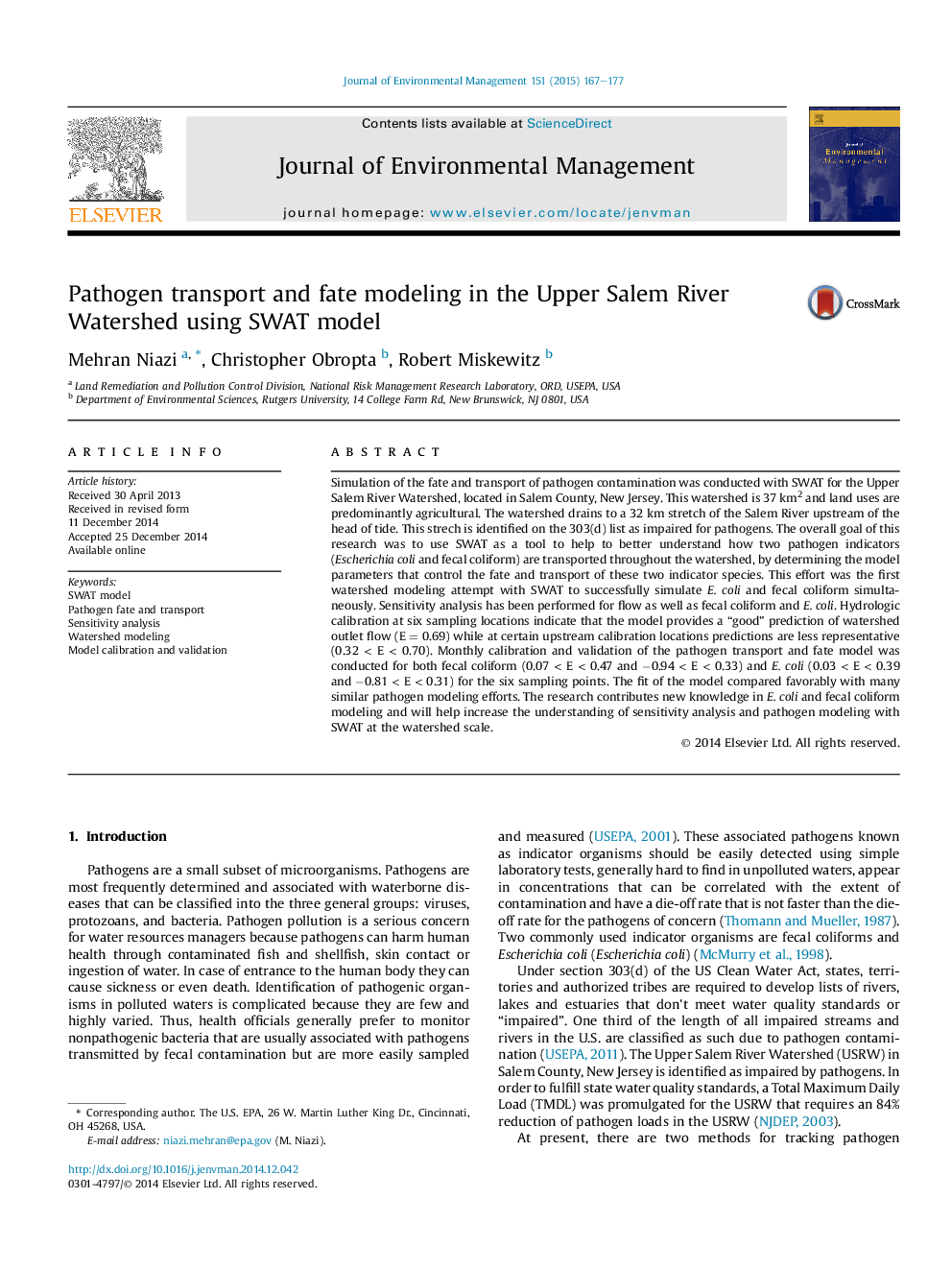| Article ID | Journal | Published Year | Pages | File Type |
|---|---|---|---|---|
| 7482760 | Journal of Environmental Management | 2015 | 11 Pages |
Abstract
Simulation of the fate and transport of pathogen contamination was conducted with SWAT for the Upper Salem River Watershed, located in Salem County, New Jersey. This watershed is 37 km2 and land uses are predominantly agricultural. The watershed drains to a 32 km stretch of the Salem River upstream of the head of tide. This strech is identified on the 303(d) list as impaired for pathogens. The overall goal of this research was to use SWAT as a tool to help to better understand how two pathogen indicators (Escherichia coli and fecal coliform) are transported throughout the watershed, by determining the model parameters that control the fate and transport of these two indicator species. This effort was the first watershed modeling attempt with SWAT to successfully simulate E. coli and fecal coliform simultaneously. Sensitivity analysis has been performed for flow as well as fecal coliform and E. coli. Hydrologic calibration at six sampling locations indicate that the model provides a “good” prediction of watershed outlet flow (E = 0.69) while at certain upstream calibration locations predictions are less representative (0.32 < E < 0.70). Monthly calibration and validation of the pathogen transport and fate model was conducted for both fecal coliform (0.07 < E < 0.47 and â0.94 < E < 0.33) and E. coli (0.03 < E < 0.39 and â0.81 < E < 0.31) for the six sampling points. The fit of the model compared favorably with many similar pathogen modeling efforts. The research contributes new knowledge in E. coli and fecal coliform modeling and will help increase the understanding of sensitivity analysis and pathogen modeling with SWAT at the watershed scale.
Related Topics
Physical Sciences and Engineering
Energy
Renewable Energy, Sustainability and the Environment
Authors
Mehran Niazi, Christopher Obropta, Robert Miskewitz,
